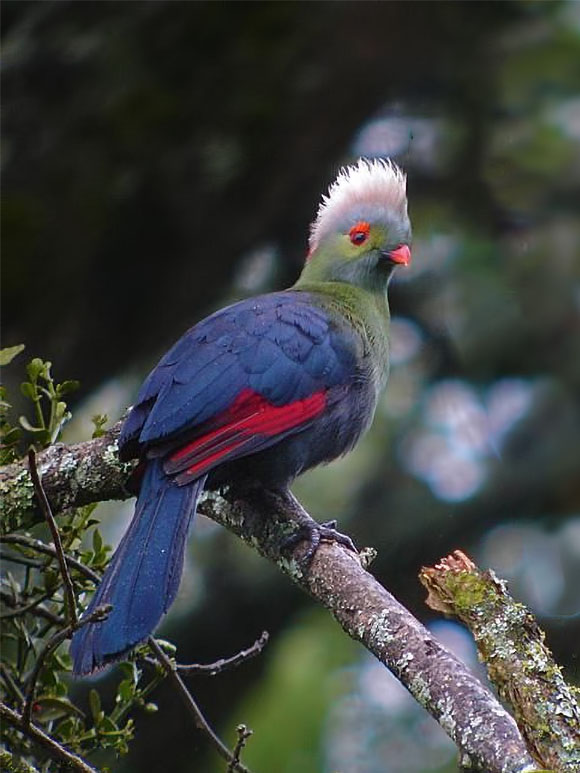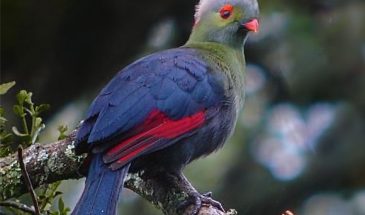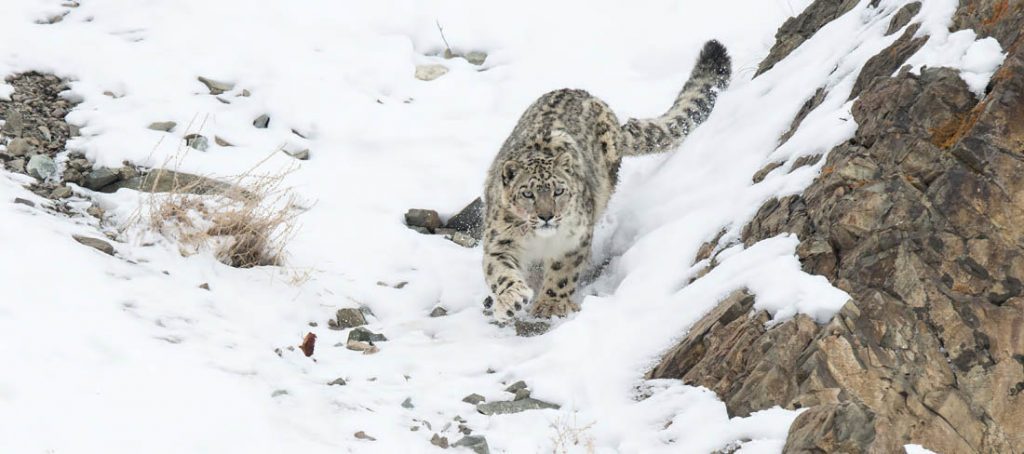- Overview
- Trip Outline
- Trip Includes
- Trip Excludes
- Gallery
- Reviews
- Booking
- FAQ
No details found.
Itineraries
Day 1
Date : November 6, 2021
Drive to Debre Zeit, Babogaya Lake Viewpoint Lodge, at 1 hour from Addis Ababa airport, a town with 7 crater lakes
Acclimatization, rest after the long flight, birding in the garden and surroundings.
3 lakes will be visited : Babogaya Lake, Lake Chelekleka, Hora Lake and the fields around Chelekleka lake.
Lake Chelekleka.
Marabou Storks often roost here in incredibly large numbers as well—an intimidating sight! The second part of the lake attracts migratory waterfowl and shorebirds, with Northern Pintail, Northern Shoveler, Garganey, Eurasian Teal, Hottentot Teal, Tufted Duck, Black-tailed Godwit, and Temminck’s Stint being among the more commonly-seen species. We also can expect to find the resident Maccoa Duck floating among the migrants, and will keep a careful eye out for White-backed Duck, which is occasionally found here as well.
Night in the Babogaya Lake Viewpoint Lodge.
Day 2
Date : November 7, 2021
Birding Around Bishoftu; Drive to Awash National Park;
Our day begins around dawn this morning with an excursion to Lake Hora and the second part of Lake Chelekleka.
Blue-breasted Bee-eater, Rüppell’s Weaver, African Citril, Beautiful Sunbird, Tacazze Sunbird, Black-billed Barbet , Black-winged Lovebird, our first endemic. Erlanger’s Lark, Banded barbet, Wattled Ibis and Ethiopian Boubou are 4 other endemics that morning. Even Ruppell’s Black Chat is rarely seen here. Spotted creeper and Red Troated Wryneck are also our targets.
Our morning in Bishoftu will pass by all too quickly, but we need to leave by lunchtime in order to make our way to our next destination, Awash National Park. The 170-kilometer trip there would take less than three hours if we drove straight through, but we will stop along the way to add roadside birds to our list. Near the park, a lava field—the remains of a volcanic eruption that occurred sometime in the early 19th century( 1820)—will offer us our best chances for Striolated Bunting, Blackstart, and the rare and little-known Sombre Rock Chat (a near-endemic).
Night in Genet Hotel , Awash Town.
Day 3
Date : November 8, 2021
Explore Awash National Park
An early start today will help us to make the most of our limited time in Awash National Park. Over 450 bird species have been documented from within the park’s borders, a total that few (if any) other places in Ethiopia can match. We will start our morning by birding in riverine forests along the beautiful Awash River, and then will head north to spend most of our day exploring the park’s savannas and Acacia woodlands.
Our primary targets today and tomorrow will be the park’s six species of bustard (Kori, Arabian, Buff-crested, White-bellied, Black-bellied, and Hartlaub’s), the gorgeous Northern Carmine Bee-eater, and the near-endemic Gillett’s Lark. We will, of course, find many other species as well, and the day’s highlights might include Somali Ostrich, Egyptian Vulture, Lappet-faced Vulture, Scissor-tailed Kite, Yellow-necked Spurfowl, Bruce’s Green-pigeon, Abyssinian Roller, Yellow-breasted Barbet, Somali Fiscal, Chestnut-headed Sparrow-Lark, Rosy-patched Bushshrike, Shining Sunbird, and Nile Valley Sunbird. Awash National Park is also one of a handful of locations in central Ethiopia from whichbirders have reported seeing an as-yet undescribed species of cliff swallow, and we will examine any flocks of swallows we find in hope of glimpsing that mysterious bird.
Awash National Park also protects a diverse assemblage of mammals, including Olive Baboon, Hamadryas Baboon, Spotted Hyena, Black-backed Jackal, African Golden Wolf, Salt’s Dikdik, Soemmering’s Gazelle, Gerenuk, Greater Kudu, Lesser Kudu, Beisa Oryx, Waterbuck, Rock Hyrax, and Bush Hyrax.
Day 4
Date : November 9, 2021
Aledeghi Wildlife Reserve
We drive to the Aledeghi Wildlife Reserve, in the southern part of the Afar Region, which we will explore for the rest of day. The plains and Acacia woodlands here offer us our best chance of finding the Arabian Bustard, and are also home to the endangered Grevy’s Zebra, the largest of Africa’s three zebra species. We will also search for Dark Chanting-Goshawk, Black-headed Lapwing, Chestnut-bellied Sandgrouse,Lichtenstein’s Sandgrouse, and Menetries’s Warbler, Secretairy Bird, and again will have the opportunity to see many of the bird and mammal species that we sought in Awash National Park.
Day 5
Date : November 10, 2021
Drive to the Rift Vally Lakes with stops on Lake Koka and Lake Ziway
Lake Koka is the first of a long list of Rift Vally Lakes we gonna explore.
On the Ziway lake, the number of waterbirds and others are too overwhelming in this area to make a list.
Day 6
Date : November 11, 2021
Birding on Lake Ziway & Abiata-Shalla National Park
We will start our day birding nearby the hotel at the lakeshore and drive to other lakeshores of Lake Ziway.
Black-Crowned Crane, Saddle billed Stork and Lesser Jacana are our targets.
In the afternoon, we explore the thin forest near the Headquarters of Abiata-Shalla National Park. If we are lucky, we see the Barn Owl. Woodpeckers, Horn bills, White Bellied Go Away bird, Ostrich and many others.
Lake Shalla is the deepest lake in the Rift, and has a steep shoreline (it is a crater lake), so it is largely devoid of waterbirds and waders, though some species breed on the lake’s several islands. All lakes are surrounded primarily by Acacia woodland, where we might find Western Banded Snake Eagle, Greyish Eagle-Owl, Black-billed Woodhoopoe, Abyssinian Ground-Hornbill, Hemprich’s Hornbill, Von der Decken’s Hornbills, Clapperton’s Francolin, Rufous-necked Wryneck, Bearded Woodpecker, Cardinal Woodpecker, Black-winged Lovebird, Buff-bellied Warbler, Red-faced Crombec, Western Black-headed Batis, White-rumped Babbler, White-winged Black Tit, Mocking Cliff-Chat, Beautiful Sunbird, White-headed Buffalo-Weaver, and many other species.
Day 7
Date : November 12, 2021
Birding Around Dinsho
If we wish to do so, we can go birding early this morning in the area around the lodge.
After breakfast, we will begin the roughly 225-km drive to the famous Bale Mountains National Park. Before long, we will climb back into the highlands, where we will find Blue-winged Goose, Wattled Ibis, Rouget’s Rail, and Spot-breasted Lapwing in wet places. Careful searching in forests along the way might also yield us a roosting Cape (Mackinder’s) Eagle-Owl.
The road will begin to wind along steep mountainsides as we enter the park, and before long, we will arrive at the park headquarters in Dinsho. We will spend our afternoon birding along the trails here. Our primary targets here are Chestnut-naped Francolin and, with some luck, roosting African Wood Owl and African Long-eared (Abyssinian) Owl. We will also keep our eyes out for endemics such as Abyssinian Slaty Flycatcher, Thick-billed Raven, and Ethiopian Siskin. Dinsho is also one of the best places to find the rare Mountain Nyala, which is found only in a handful of high-elevation areas of Ethiopia east of the Great Rift Valley, and Menelik’s Bushbuck, an endemic, dark-colored, long-haired subspecies of the widespread Bushbuck.
Day 8
Date : November 13, 2021
Explore the Sanetti Plateau
An early start this morning will help us to make the most of our limited time in Bale Mountains National Park. We will spend most of the day today birding the Sanetti Plateau, which in addition of offering excellent birding is the best place to find the beautiful, rare, and endemic Ethiopian Wolf. On our way there, we will pass through forests dominated by juniper and Hagenia, which offer us an excellent opportunity to find Abyssinian Woodpecker, White-backed Black Tit, Abyssinian Catbird, Abyssinian Ground-Thrush, and a variety of other bird species.
The Sanetti Plateau is covered by Afro-alpine moorland, a moist habitat characterized by low shrubs and grasses and by Ethiopia’s strange-looking endemic species of Giant Lobelia. This habitat supports large rodent populations (including that of the Big-headed African Mole-Rat, or Giant Mole-Rat, found only here), which support the aforementioned Ethiopian Wolf and also attract a myriad of raptors. It also is the best place to see the endemic Blue-winged Goose, Rouget’s Rail (which is especially confiding here), and Spot-breasted Lapwing; although we likely will have seen those species already, we can expect to get our best look at them here. Other specialties we will search for here include Chestnut-naped Francolin, Moorland Francolin, Wattled Crane, and Moorland Chat. Interestingly, the Plateau supports breeding populations of three species not usually associated with tropical Africa: Ruddy Shelduck, Red-billed Chough, and Golden Eagle.
Day 9
Date : November 14, 2021
Awassa
Another early start this morning will afford us the time to begin our journey back to the Rift Valley. We will spend 4 hours of the day driving toward Lake Awassa , another Rift Valley Lake just south of Lakes Abijata, Shala, and Langano, breaking up the drive with some stops for birding as appropriate. We will arrive at our hotel in the afternoon, and can take time to bird around our hotel ( spotted creeper) and in nearby areas we can expect to see Grivet Monkey and the handsome Guereza (a species of Black-and-white Colobus) as well.
Day 10
Date : November 15, 2021
Awassa and Wondo Genet
There are so many interesting birding areas around Lake Awassa, that we gonna spend most of the day here.
Black Heron, Senegal Thick-knee, Pygmee Goose, Lesser Jacana, African Jacana, Squacco Heron, Goliath Heron, Saddle billed Stork.
In the late afternoon, we drive 45 km to the forest edge in Wondo Genet. Those who like can jump in the hot water swimming pool in the forest of the hotel. Others can look around for the White cheeked Turaco and several other birds.
Day 11
Date : November 16, 2021
Birding in Primairy Forest of Wondo Genet
We will begin the day by birding in the primary forest of Wondo Genet with our local birding guide.
Scaly Francolin, Lemon Dove, the endemic Yellow-fronted Parrot, the near-endemic White-cheeked Turaco, Narina Trogon, Silvery-cheeked Hornbill, Double-toothed Barbet, Scaly-throated Honeyguide, the near-endemic Abyssinian Woodpecker, Red-shouldered Cuckooshrike, and Abyssinian Ground Thrush, Half Collored Kingfisher.
We will make some stops for birding and sightseeing along the way.
Dinner and shower in the Viewpoint Lodge on the Babogaya Lake.
Day 12
Date : November 17, 2021
Birding Sululta Plain and Debre Libanos
We start, from the Viewpoint Lodge in Debre Zeit, by driving to the Sululta Plain (just north of Addis Ababa). The wetlands here should yield an enjoyable mix of species, including the endemic Blue-winged Goose, Wattled Ibis, Spot-breasted Lapwing, White-collared Pigeon, Erlanger’s Lark, Abyssinian Longclaw, Ethiopian Cisticola, and Ethiopian Siskin; a variety of raptors; and many others.
In the afternoon, we explore the nearby town of Debre Libanos and its surroundings. There, we can search for Geladas, admire the view into the steep-sided gorges to the north of the town, and visit the Debre Libanos monastery (one of Ethiopia’s most important monasteries). Birding around Debre Libanos might again yield us a look at the Ankober Serin, though it’s not a sure thing. This is also one of the best places to look for the impressive Lammergeier and Rüppell’s Griffon, as well as the endemic White-collared Pigeon and Abyssinian Slaty Flycatcher, and we again are likely to find Rüppell’s Black Chat, White-winged Cliff Chat, Ethiopian Boubou, and White-billed Starling.
Day 13
Date : November 18, 2021
Birding the Jemma Valley & Debre Libanos
Our target this morning, before 5 am, will be Harwood’s Francolin, an Ethiopian endemic restricted to highland gorges cut by tributaries of the Blue Nile. The best place to look for Harwood’s Francolin is the Jemma Valley, northwest of Debre Birhan, and the birds are most easily found early in the morning, when they are at their most vocal. For that reason, we will make another early start this morning in order to arrive in the Jemma Valley shortly after dawn.
We will spend our entire morning birding in the Jemma Valley, and in addition to Harwood’s Francolin will seek out the near-endemic Erckel’s Francolin, Rüppell’s Black Chat, White-winged Cliff Chat, White-billed Starling, Swainson’s Sparrow, Red-billed Pytilia, and Yellow-rumped (or White-throated) Seedeater. We can also expect to see many other more common and widespread species, the highlights among which might includea variety of raptors, Half-collared Kingfisher, Abyssinian Wheatear, Foxy Cisticola, Ethiopian Boubou, Cinnamon-breasted Bunting, Black-winged Red Bishop, Yellow Bishop, and Red-cheeked Cordon-bleu.
Day 14
Date : November 19, 2021
Ankober–Debre Sina Escarpment
This small area of Ethiopia is famous among birders as the best place to find two rare, endemic finches, the Ankober Serin and Yellow-throated Serin. We will search for the extremely range-restricted Yellow-throated Serin around Melka Ghebdu, about halfway through our climb out of the valley. The Ankober Serin inhabits the highest parts of the escarpment, and we might find it as we finish our climb near Ankober. However, that species is most reliably seen at a place called Gemessa Gedel,between Ankober and Debre Sina, and we will also look for it there.
Other interesting birds we will search for along the Ankober-Debre Sina escarpment include Lammergeier, Verreaux’s Eagle, Wattled Ibis, White-collared Pigeon, Banded Barbet, Groundscraper Thrush, Moorland Chat, Shining Sunbird, Ethiopian (or Black-headed) Siskin, and Brown-rumped Serin
No Details Found






There are no reviews yet.